Network Interfaces
Regardless of the WAN in use ATM, Frame Relay, or IP VPN a network interface is required. This interface is either a user-to-network interface (UNI), connecting a customer to a service provider's network, or a network-to-network interface (NNI), connecting two networks whether they are two customer or two service provider networks.
UNI
A UNI is used in ATM and Frame Relay (FRL) networks to describe the interface between the ATM/FRL end-user and the network service provider ATM/FRL network access switch. The term UNI can also describe the interface between a private ATM switch and the public network service provider ATM network.
Figure 8-2. UNI
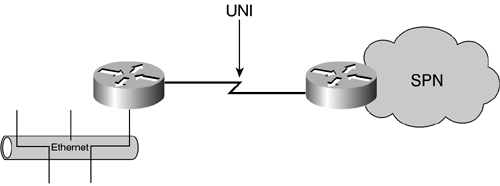
NNI
An NNI is created when two disparate networks require interconnection, such as two Frame Relay WANs from different service providers. This scenario is best used when clients are migrating from one service provider to another, they use different network service providers, or they need to use two or more network service providers.
The building of the Transcontinental railroad in 1870 serves as a good example of the first NNI and the way an NNI operates. In 1870, the Denver and Río Grande Railway Company was chartered to build a railway from Denver, Colorado to El Paso, Texas. This line reached Pueblo by 1872, and the company built a branch west from there to coal mines at Cañón City. The choice was made early on to construct the railroad on a three-foot gauge not the four-foot, eight-inch gauge of its chief competitor, the Atchison, Topeka, and Santa Fe.
In 1881, the Río Grande Railway Company had extended its narrow-gauge tracks throughout the mountains of Colorado. The tracks crossed the Continental Divide in five places, over mountains and across gorges. On the track from Denver to Pueblo, the Río Grande Railway Company bowed to increasing use of standard gauge rolling stock. A third rail was added to accommodate both sizes of trains. If this third rail had not been added, another solution would have been possible.
These two railroads are independent networks requiring an interconnection to complete the Transcontinental Railroad. The additional solution would involve the Western and Eastern Railroad meeting at a point in the country where both the Eastern track and the Western track could find a common point of connection: a railroad station, as shown in Figure 8-3.
Figure 8-3. Two Railroads Representing Networks

This railroad station would be constructed so that both the Eastern and Western Railroad tracks were connected to the station. The station, acting like an NNI, provided a means for which passengers and goods could be offloaded from the railcars of one railroad for example, Western and loaded onto the railcars of the other railroad for example, Eastern (see Figure 8-4).
Figure 8-4. The Train Station Provides a "Railroad NNI"

When this passenger/goods transition was completed, the journeys of the two trains could continue across the other railroad network, as shown in Figure 8-5.
Figure 8-5. The Eastern and Western Railroads Interconnect Through a Train Station, or an NNI
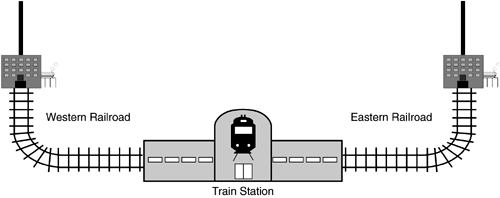
If you replace the train station with a router or switch and you consider this the customer premise, you'd achieve the concept of an NNI, as shown in Figure 8-6.
Figure 8-6. Railroad vs. WAN NNI
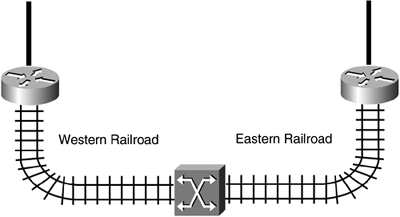
Figure 8-7 illustrates a customer-based NNI, with a LAN switch providing connectivity to two WAN routers: one router is connected to Network Service Provider #1's network, and the other router is connected to Network Service Provider #2's network.
Figure 8-7. Customer WAN NNI
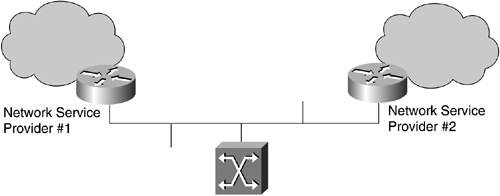
A customer-based NNI can be accomplished with a single router, as illustrated in Figure 8-8. However, two WAN Interface Cards (WICs) or serial interfaces, each connecting to a separate channel service unit/data service unit (CSU/DSU) and subsequent local loop, are required.
Figure 8-8. Customer WAN NNI (with One Router)
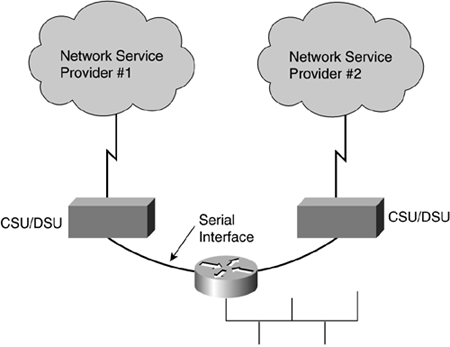
Some NSPs can provide NNI service to other network service providers, as illustrated in Figure 8-9. This scenario is used when customers requires WAN connectivity to some locations where their primary providers cannot provide service.
Figure 8-9. Network Service Provider NNI
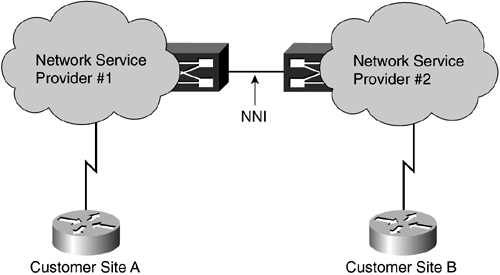
EAN: 2147483647
Pages: 269